“I’m a Podiatrist and *This* Is the Drugstore Cream That Prevents Calluses”
Plus, the special sponge that removes them with ease!
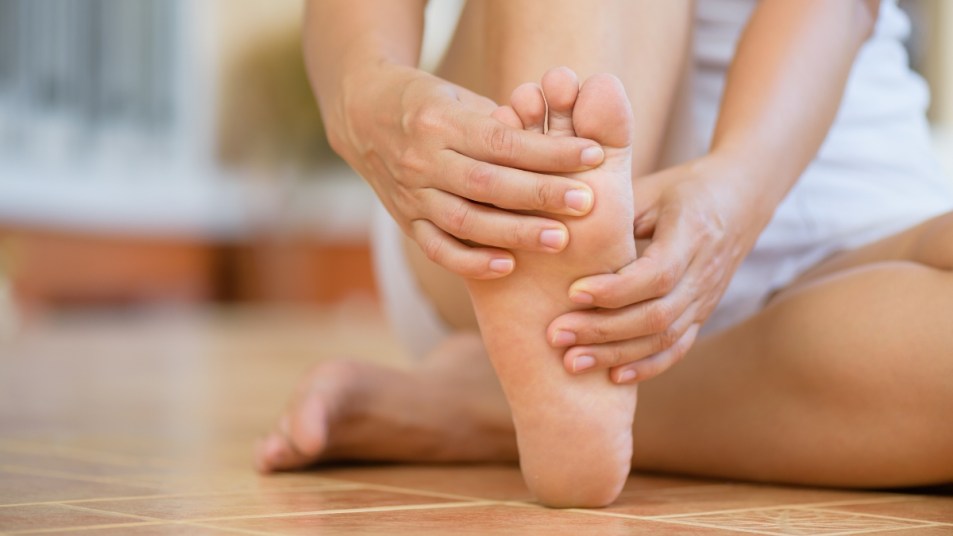
When it comes to caring for our overall health and well-being, we’ll groom and maintain our hair, eyebrows and face and even try various workouts and diets. One important area that literally carries the weight of our body but probably gets the least of our attention? Our feet. “When we walk, we put a lot of pressure on our feet,” says Brad Schaeffer, DPM, NY-based board-certified foot surgeon and star of TLC’s My Feet Are Killing Me. “This pressure can cause pain and inflammation when not supported properly, so it is very important to prevent and protect our feet every step we take.” And that includes learning to how to prevent calluses on feet, one of the most pesky foot problems. Read on to learn more.
What is a callus?
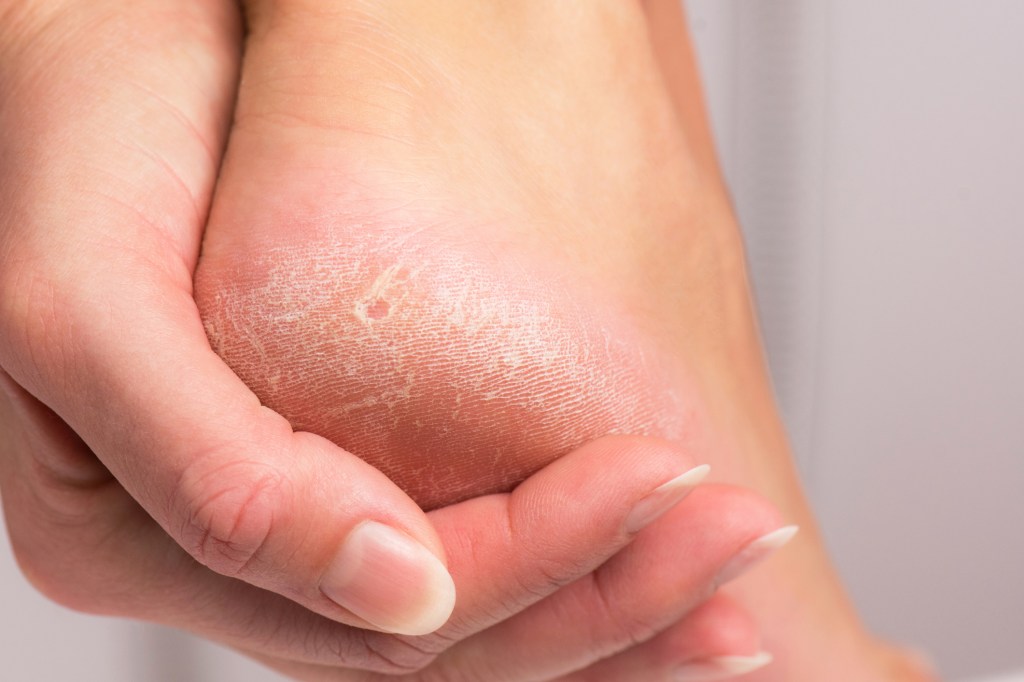
Ever looked at the bottom of your foot and noticed a dry patch or realized specific areas of your feet hurt? Chances are, you have a callous, and they can be a big bump in the road to smooth feet. “A callus is a thickened and hardened area of skin that develops in response to repeated friction, pressure or irritation,” explains H. Craig Fox, DMP, Oswego, Illinois-based podiatrist. “It is a natural protective mechanism that the skin employs to shield itself from excessive stress or rubbing.”
Some common callus questions:
What’s the difference between a callus and a corn?
You’ve probably heard of corns as well, but what’s the difference between the two? Corns and calluses are actually very similar, explains Audey Nasser, DPM, a double-board-certified podiatrist in Gurnee, Illinois. “The big difference is the location that they form. We commonly see corns on the toes, usually at the tops of the toes or the sides. They are small, thickened areas of skin with a hardened center caused by friction and pressure. These are commonly seen in people with hammer toe deformities — toes that bend at the joints when standing.”
According to Dr. Schaeffer, calluses may be thick, hardened layers of skin that form when the skin tries to protect itself against friction. They are not typically painful, but “when left untreated, the cracked skin around the heel can make walking uncomfortable.” Calluses are usually found in the bony areas at the bottom of your feet.
Are calluses hereditary?
Here’s some good news about calluses: Dr. Schaeffer confirms they are not hereditary, but the underlying cause like bunions, flat feet or high arch feet is hereditary. And he notes they are more common with age. “Throughout life, our body develops a lot of wear and tear,” explains Dr. Schaeffer. “This happens in our joints and skin. As we age, for example, our joints can develop arthritis and our skin can develop calluses.”
Dr. Spector also sees more older patients in his practice with calluses than younger patients. Due to aging, he explains, changes in the fat padding or skin elasticity on the bottom of the foot, the development of conditions such as arthritis, medical conditions such as diabetes or a change in our gait (pattern that we walk) “also makes one prone to calluses.”
Are calluses contagious?
Thankfully, Dr. Nasser says calluses themselves are not contagious. “However, if the underlying cause of the callus is due to a contagious skin condition or infection, such as warts or fungal infections, those conditions may be transmissible.”
Can you go barefoot with a callus?
While it’s nice to kick off your shoes after a long day and let your feet unwind in the comfort of your home, Dr. Nasser says it’s a good idea to protect callused areas from further friction or pressure. “Wearing well-fitted socks or cushioned slippers can provide a layer of protection and reduce potential irritation. Going barefoot is not really recommended due to the fact it can increase callus formation.”
Can you get calluses on your hands, too?
Calluses on the hands often develop in response to repeated friction or pressure, explains Dr. Nasser, such as gripping tools or performing manual labor. “Lots of athletes that use their hands for sports like gymnasts, baseball players and tennis players will develop calluses on their hands.”
Can you get pedicures if you have a callus?
Believe it or not, if you are diabetic, pedicures are not recommended, says Dr. Nasser. “Diabetics are at much higher risk for foot complications associated with calluses.” For the average person, explains Dr. Nasser, it’s generally safe to get a pedicure with a callus, but make sure to let technicians know about the calluses. “They can use proper tools to reduce the thickness of the callus. Also, avoid sharp instruments that may cause injury.”
How to prevent calluses on feet: 3 simple tips
Says Dr. Schaeffer: “Calluses can be prevented by caring for our body, skin and feet! I tell my patients all the time that our feet are our body’s natural stabilizers, and they need to be cared for just like any other part of our body.” Here’s how to prevent them:
1. Wear the right shoes
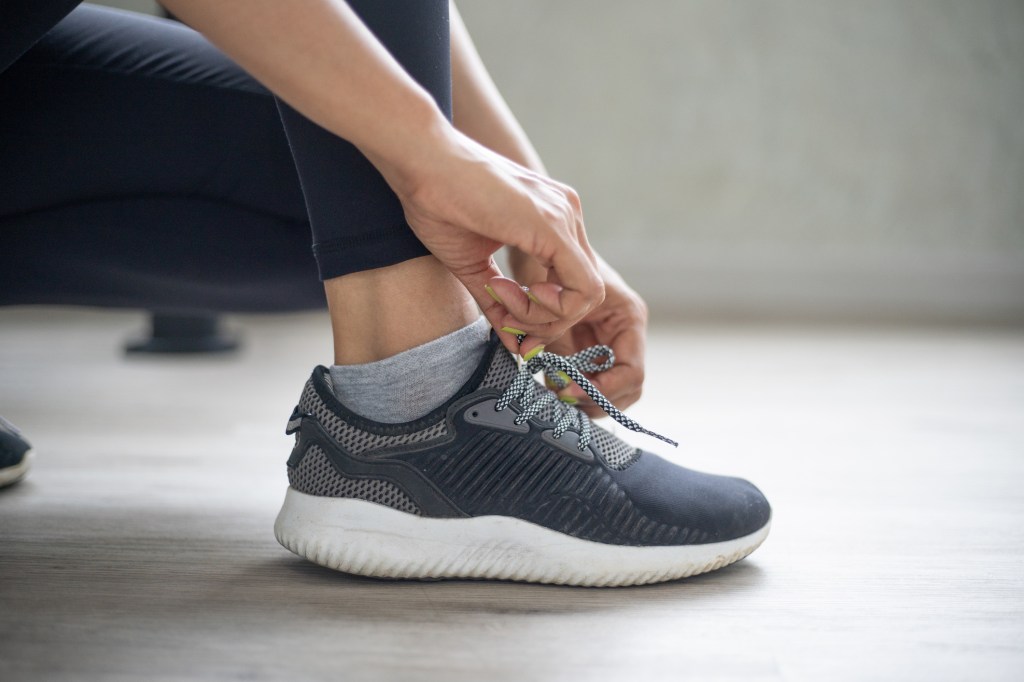
Dr. Nasser says it’s important to have properly fitting shoes with sufficient cushioning and support. As much as you might love your high-heels or flats, it might be time to ditch them if they’re causing calluses or corns.
“Shoe brands I like are Asics, Brooks and Hoka,” says Dr. Nasser. “Some of them, like Brooks and Hoka, have a 90-or-30-day return policy, so you can get them and try them out walking around outside and really get a feel for them. But with every shoe you’ll want to make sure you have the right shoe for your foot type. Whether you have a flat foot or high arch, each company makes shoes for that foot type.”
Also look into custom orthotics, says Dr. Nasser, which can be used to offload bony prominences that can cause calluses.
2. Keep your feet clean and moisturized
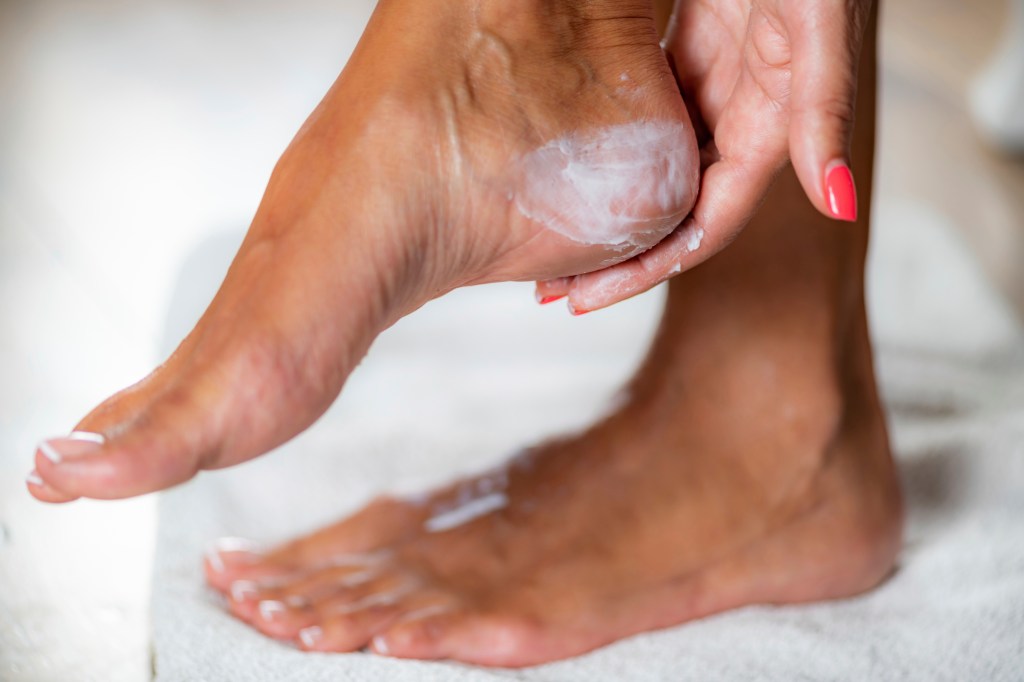
Dr. Nasser says to keep feet clean and moisturized to prevent dryness and cracking. This can help fight off calluses. “I like CeraVe and Eucerin products, especially the CeraVe moisturizing creams.” Further, double up on lotion during the winter, adds Dr. Nasser. “Calluses are usually worst at that time, especially around the heel area. Be mindful of fissures or cracks in the heels seen with calluses. These can become infected and cause a lot of pain.”
Dr. Schaeffer’s tried-and-true combination products to prevent calluses on feet: “For those with extremely dry or cracked skin, I recommend using Dr. Scholl’s Severe Cracked Heel Repair Restoring Balm (Buy from Walmart, $6.47), which instantly draws water deep into the skin,” he says. “It glides on smoothly, hydrates your skin, is moisturizing and fills in ‘cracks’ while leaving an invisible layer of protection, which is perfect for women who are in the 50+ age range with calluses.” In conjunction, he adds, Dr. Scholl’s Dry, Cracked Foot Repair Ultra-Hydrating Foot Cream (Buy from Walmart, $7.18) is great for everyday use after showers to help prevent hard skin from building up.
Another heel balm to try is the Voesh Heel Repair Duo (Buy from Macy’s, $18), which comes with a heel repair balm stick and moisturizing heel socks.
3. Scrape feet with a pumice stone

Pumice blocks can be effective tools to help fight off calluses due to their exfoliative properties, says podiatrist Jason Spector, DPM, MS, AACFAS, of Lakewood Ranch, Florida. “When calluses build up thick, hardened layers of extra skin, the coarse nature of the pumice stone can help to remove these extra layers of skin.” One to try is the Mr. Pumice Pumi Bar (Buy from Amazon, $5.97 for a 4-pack). This exfoliant can help reduce or eliminate the callus and greatly reduce pain and discomfort. Dr. Spector usually recommends Epsom salt soaks to help soften the skin beforehand. (Click through to read more about the benefits of Epsom salt.)
Dr. Schaeffer’s advice to prevent calluses on feet by exfoliating: “I’d invest in Dr. Scholl’s Hard Skin Remover Nano Glass Foot File (Buy from Amazon, $7.97), which glides on your feet to quickly remove hard and rough skin, leaving your feet feeling smooth, soft and healthier.”
How do you get rid of calluses on feet?
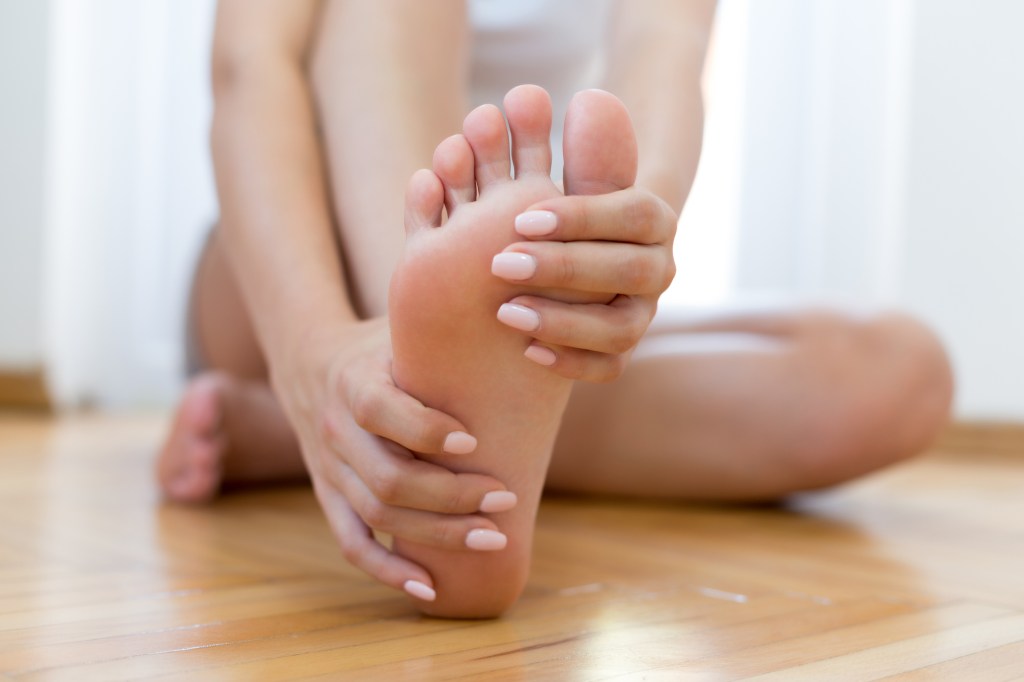
Thankfully, there are many ways to heal your calluses and make your feet feel silky and sleek thanks to over-the-counter products.
1. Try callus pads
Here’s the catch — there are just so many on the market, and some are padded and some are sticky. Callus pads come in various shapes and sizes, notes Dr. Fox, so choosing the right one is important.
Dr. Fox prefers the padded ones; however, he stresses that it’s crucial to note that salicylic acid is often the active ingredient in most callus pads. “It’s advisable to avoid these harsh medications on your feet. Opt for non-medicated pads designed to protect the callus,” he says.
Dr. Spector is also “not a huge fan” of the salicylic acid pads and does not routinely recommend them to patients. “I find patients don’t apply them properly or the pads shift on the skin and start breaking down other areas of healthy tissue.”
“Follow a simple principle: pad everything around the callus and allow the callus itself to be in the hole of the pad.” One to try: ZenToes callus cushions (Buy from Amazon, $16.14).
2. Use a drywall sponge
According to Dr. Fox, a mechanical method of removing calluses is to use a 4-sided sanding block. “These blocks come in many grits. Choose a fine grit for your feet and use the dry sanding sponge in the shower to remove calluses.” He recommends one from S&F Stead and Fast (Buy from Amazon, $8.49). “The sponge is effective and stays waterproof. Additionally, you can clean it easily, and it doesn’t collect the dead skin like other stone-like devices.
3. Opt for urea creams
Urea is an ingredient used to treat various skin conditions, from psoriasis and eczema to corns and calluses. “Urea creams are great for breaking down thickened skin like calluses,” explains Dr. Nasser. “You really need a urea cream that is 20% or higher to really target the hardened skin of a callus.” Stratus Pharmacy sells one online at 20% (Buy from Amazon, $23.50). If that doesn’t seem to help, you can try a urea cream with a higher percentage. The brand Ebanel (Buy from Amazon, $15.95), for example, carries a product that contains 40% urea.
For more tips on treating your feet, click through these stories:
Cold Feet (Literally)? Here’s Why, According to Experts — And What You Can Do About It
Do You Have Wide Feet? Here’s Why You Should Avoid Patent Leather (Plus Other Tips)














